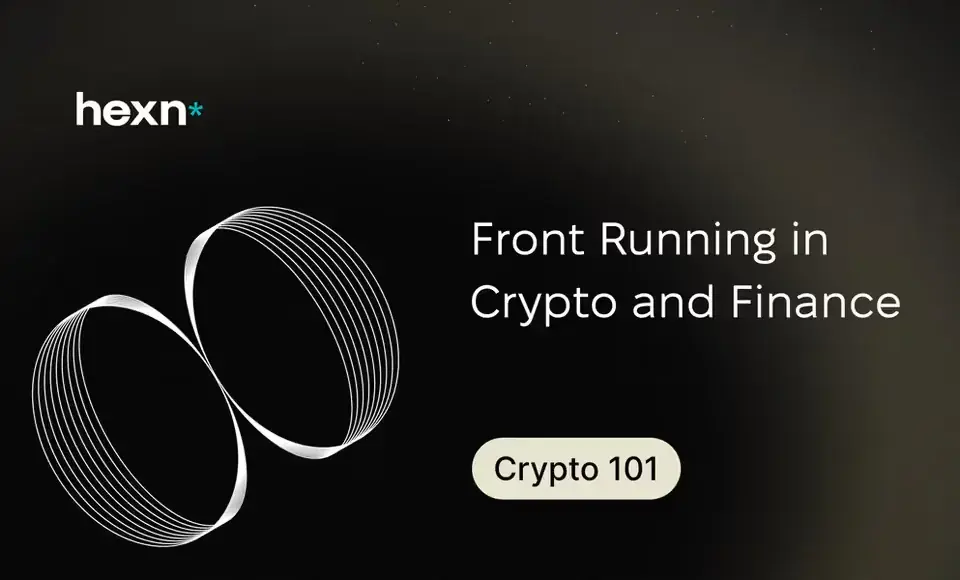Front Running in Crypto and Finance
What Is Front Running?
Front running is when someone uses advance knowledge of another trader's order to get ahead and profit from the resulting price move. It matters because it undermines fair markets, increases costs for regular traders, and is a growing concern as decentralized trading becomes more common.
Why Front Running Matters for Traders?
Front running describes placing trades based on non-public or early-access information about an upcoming transaction. In traditional finance it usually involves brokers or intermediaries acting on client orders. In crypto, the transparent nature of blockchains and visible pending transactions create new opportunities for automated bots and validators to exploit similar information.
Front running can appear in stock, commodity, forex, and crypto markets. Each context has different mechanics, but the basic pattern—someone acting on advance information to secure an unfair profit—remains the same.
How Front Running Works in Traditional Finance
Imagine a large investment fund tells its broker to buy $10 million worth of a stock.
- The broker sees this huge buy order and knows it will likely push the price up.
- Before executing the fund's order, the broker buys some of the stock for their own account.
- They then process the fund's large order. The price rises as expected.
- The broker immediately sells their own shares for a quick, risk-free profit.
This is considered market manipulation because it uses privileged information for an insider's benefit at the client's expense.
Why Front Running is Treated as Wrongdoing
Regulators and market participants view front running as harmful because it:
- Misuses confidential information — insiders are expected to put client interests first, not profit from privileged knowledge.
- Distorts market fairness — people with early access get an unfair edge over others.
- Harms ordinary investors — clients and smaller traders may suffer losses or wider spreads because of the manipulation.
How Front Running Works in Crypto
On a public blockchain, all pending transactions sit in a public waiting area called the mempool. Sophisticated bots constantly scan the mempool for large or profitable trades they can exploit.
Mempool Sniping
When a bot spots a large DEX swap, it can copy the trade and submit its own identical transaction with a higher gas fee. This "priority fee" gets its transaction processed first, allowing the bot to profit from the price movement caused by the original trade.
Slippage Exploits
On decentralized exchanges, traders set a "slippage tolerance"—the maximum price change they're willing to accept. Bots can exploit high slippage settings by buying up an asset right before your trade, pushing the price up to your tolerance limit, and then selling immediately after your trade executes at the worse price.
MEV (Maximal Extractable Value)
Maximal Extractable Value refers to profits that can be captured by reordering, inserting, or censoring transactions inside a block. On high-speed or low-latency networks, validators or specialized services may extract MEV by prioritizing certain transactions, creating front-running opportunities that are technically different but economically similar to traditional front running.
How to Protect Your Trades from Front Running
While complete prevention is difficult in decentralized environments, traders can lower their exposure with these tactics:
- Set tighter slippage tolerance so large unexpected price moves will cause transactions to fail instead of execute at a worse rate.
- Use private transaction relays or hidden order methods that keep orders out of public mempools until they are included in a block.
- Split large orders into smaller ones to avoid drawing attention from bots that target big trades.
- Consider MEV protection services such as MEV blockers or private execution layers that aim to reduce extractable value for adversarial actors.
Final thoughts on Keeping Markets Fair
Front running, whether on Wall Street or on-chain, damages trust and creates an unfair playing field. Understanding how it works is the first step to protecting yourself.
As the Web3 ecosystem matures, new infrastructure and protocols are constantly being developed to minimize MEV and create a more equitable environment for all participants.
